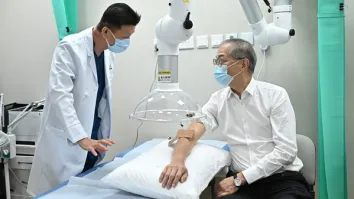China's local immunotherapy drugs poised for approvals
The brands could see significant adoption in more cost-conscious markets.
The generation of China’s domestic brands for immune checkpoint inhibitors (ICIs), which has been used for the treatment of cancer, are now poised for approvals in local and international markets, which will drive down drug prices, according to a report from GlobalData.
Historically, the Chinese market has been a target for a third wave of revenue generation for Western brands after gaining market access in the US and Europe, GlobalData’s senior oncology analyst Adam Pearson commented.
“However, in the last decade a mixture of local R&D investment, regulatory reform, and international partnerships have accelerated Chinese capabilities for drug commercialization and the development of domestic brands,” Pearson said.
Domestic products are promoted in China by inclusion on the National Reimbursement Drug List (NRDL) and are subsequentially heavily discounted compared to international brands, creating a significant commercial advantage.
For example, several domestic checkpoint inhibitors approved since 2018 have been placed on the NRDL and are subject to significant discounts of up to 75% compared to their international counterparts.
“International ICI brands seeking market access in China are now required to balance diminishing drug prices with the opportunity to target an enormous patient pool or identify underserved markets, where local brands are not available and pricing pressures are less restrictive,” Pearson said.
Due to a fierce competitive landscape, established physician familiarity with international brands and severe pricing pressures, the commercial potential for domestic ICIs may be limited. However international market access may provide additional revenue streams.
There has been a rise in deals where Chinese companies will develop and commercialize drug candidates developed by Western companies and where multinational companies will commercialize Chinese drugs outside of China, Pearson said.
On the other hand, he finds it unlikely that there will be a significant adoption by physicians in the US for Chinese domestic ICIs unless the efficacy data are exceptional, due to the significant brand loyalty for established international brands.
“However, in more cost-conscious markets the drugs could achieve significant adoption. In addition to a potential change in clinical practice, the emergence of heavily discounted Chinese ICIs in Western markets will likely provide pricing pressures for established ICI brands,” Pearson added.



















 Advertise
Advertise








